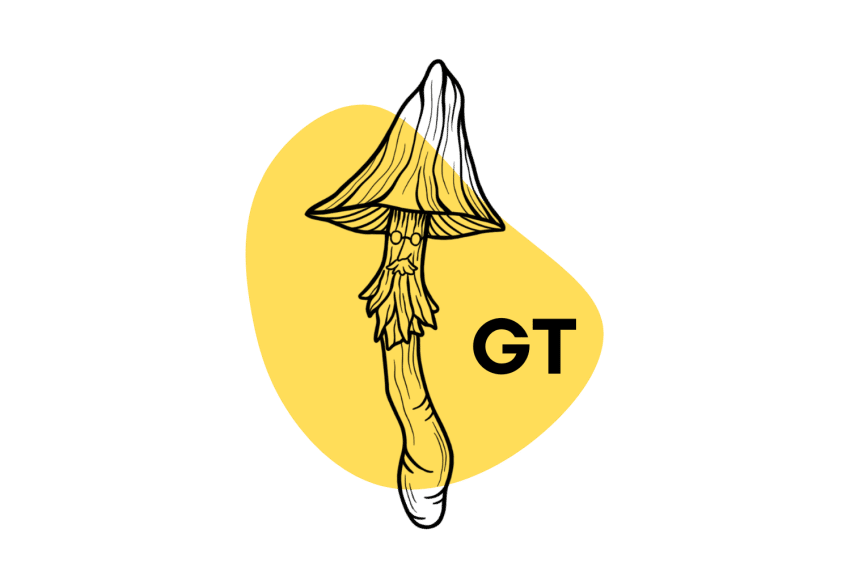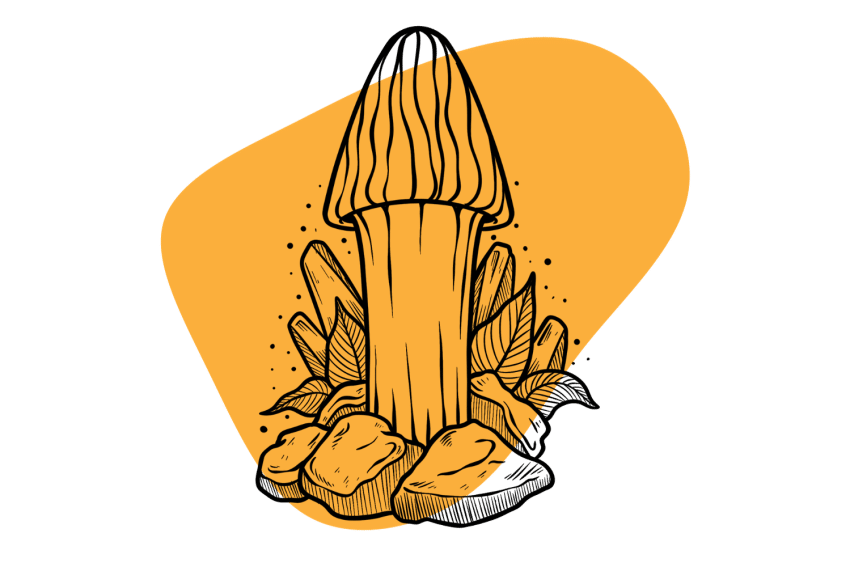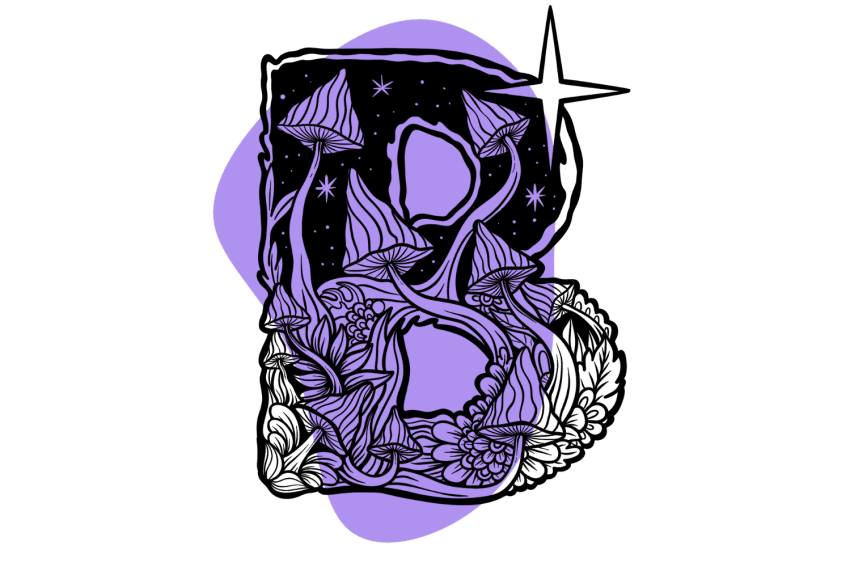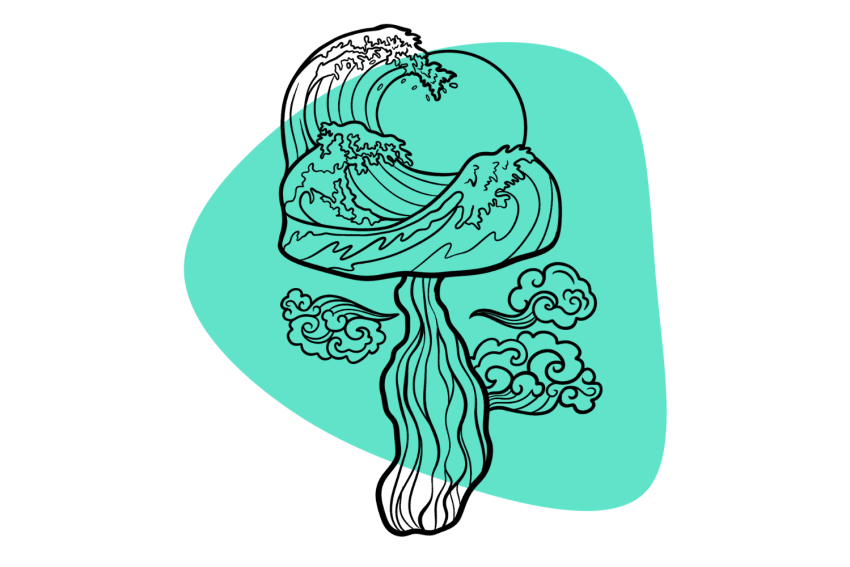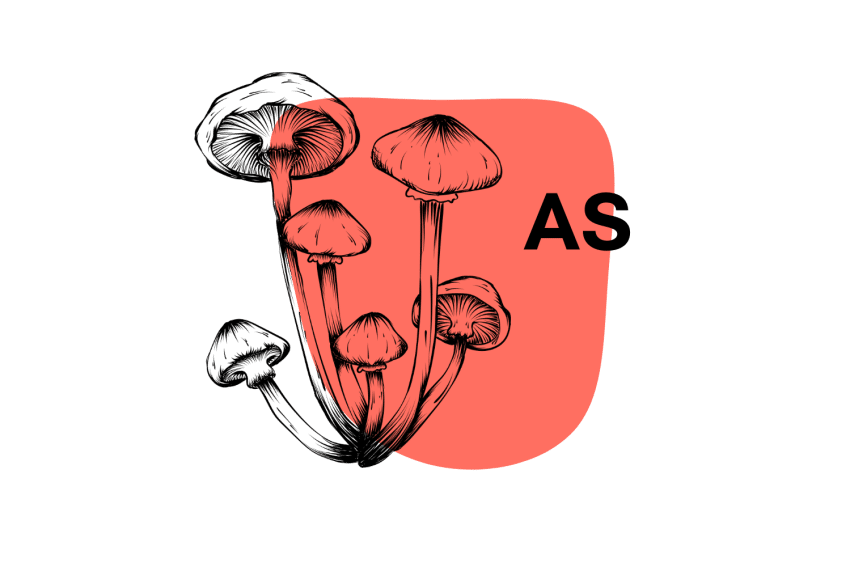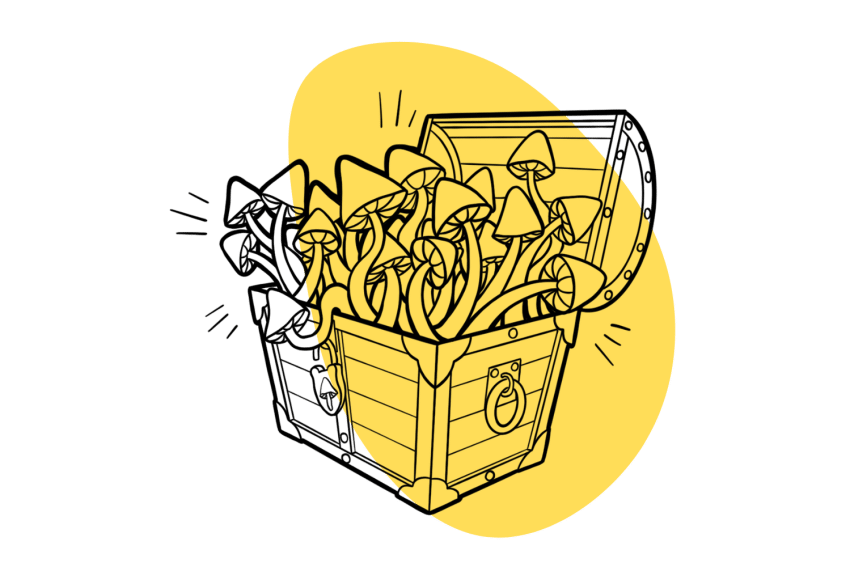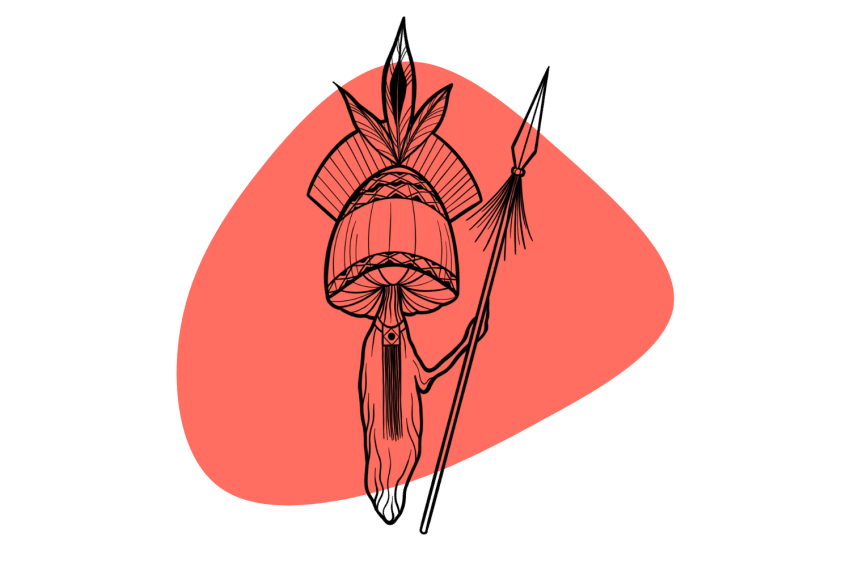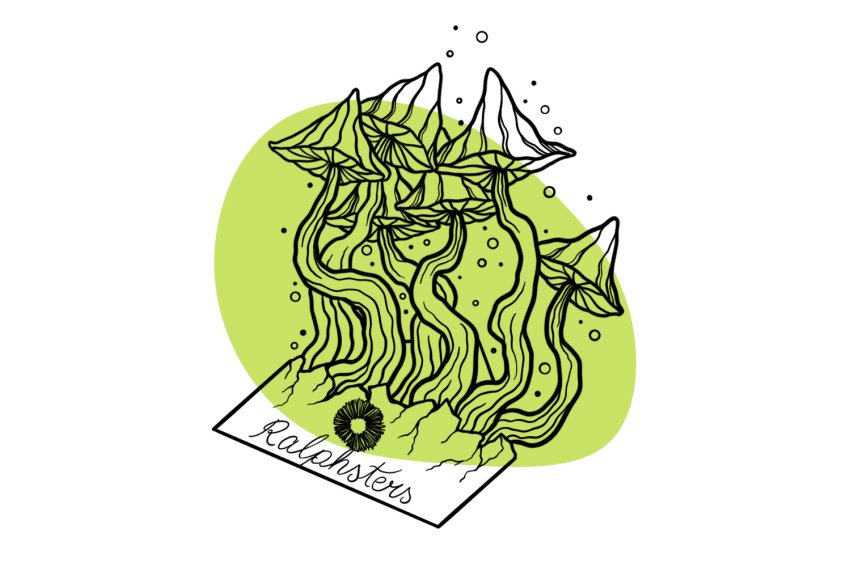The Mazatapec Strain: A Strain for the Mind, Body, & Spirit
Mazatapec is a Nahuatl word and the name of a small town where the first sample of this strain was collected. “Maza” means “deer,” 🦌 and “tepec” means “hill” or “mountain.” ⛰️
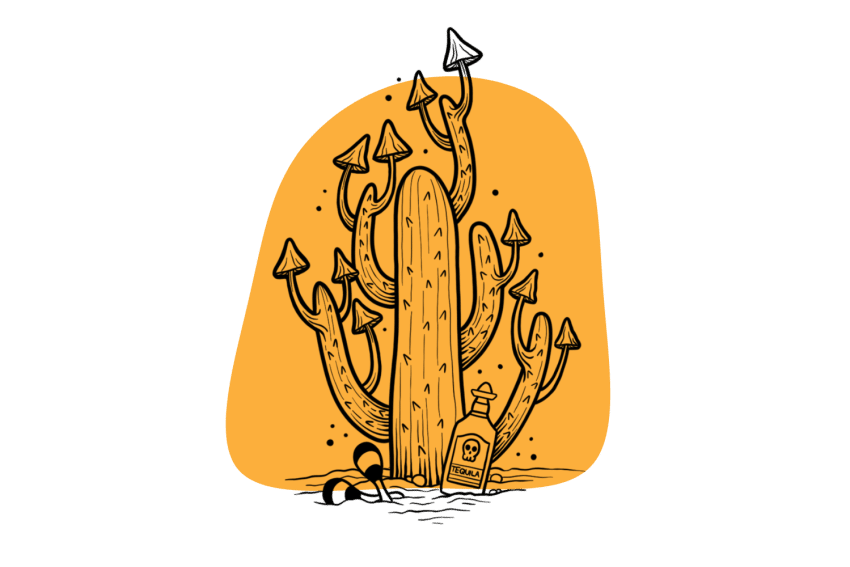
The Mazatapec strain was one of the first Psilocybe cubensis strains brought back to the west. It’s believed that the original sample made its way to the United States in the hands of Robert Gordon Wasson some time in the 1950s (debated).
The first sample came from the mountainous Sierra Mazateca regions of Mexico, where the strain flourishes in the grazed hillsides surrounding the small villages of the natives. Maria Sabina consumed mushrooms around the same area where the original Mazatapec strain was collected. Sabina was the shaman who first showed Wasson these magic mushrooms.
Mazatapec has round bulbous caps with a cream-white to golden brown coloration and long white stems that become narrower from base to cap.
The caps retain this rounded appearance through maturity but tend to get a bit wider as the veil releases and the gills begin to sporulate. A pointy nipple can be noted in most caps — this becomes more pronounced after drying. This is a relatively interesting strain to look at, but it’s not winning any awards for its size.
Mazatapec mushrooms grow to around five to 10 cm in diameter and are typically 10 to 15 cm from base to cap.
The potency of this strain is roughly average compared to other P. cubensis strains. The experience is said to be more spiritual and inward-facing but not as profound as some of the more potent strains. This makes it an excellent choice for beginners looking to embark on their first mushroom journey, but the more experienced psychonaut can also enjoy it.
Related: 100 Magic Mushroom Strains Explained
The Mazatapec strain is easy to cultivate, which makes it a popular choice among beginner cultivators. It’s contamination-resistant and can cope with unoptimized growing conditions. Although the fruiting bodies are average, you can get good yields through several dense flushes.
In this article, I’ll look at this strain’s history and origins. We will then move on to its potency and a bit about where to find genetic samples and how to cultivate them.
Mazatapec Strain Specs
| Potency | Average 🍄 |
| Cultivation | Easy |
| Species | Psilocybe cubensis |
| Substrate Recommendation | Coco Coir & Vermiculite, BRF Cakes |
| Sold By | Spores MD (🇺🇸), Spores 101 (🇺🇸/🇨🇦), Miracle Farms (🇺🇸/🇨🇦), Sporeslab (🇨🇦), The Magic Mushrooms Shop (🇪🇺) |
History of the Mazatapec Strain
The Mazatapec strain was one of the first Psilocybe cubensis strains to make it to the west. This strain has an intriguing history. Mexican strains of Psilocybe cubensis have been used for centuries, including by the Nahuas people living in the Sierra Mazateca, where shamans used them during spiritual and healing ceremonies.
It’s believed that Robert Gordan Wasson formally brought the Mazatapec strain back to the western world. There has never been any solid evidence to confirm this, however.
R. Gordan Wasson traveled through Mexico in the 1950s in search of mystical experiences and psychedelic fungi. He met with the famous curandera Maria Sabina and took part in one of her mushroom ceremonies, where he consumed species of psychedelic fungi such as Psilocybe mexicana, Psilocybe caerulescens, and Psilocybe cubensis.
Related: List of Psilocybin Mushroom Species
The original Mazatapec sample supposedly came from somewhere close to Maria Sabina’s village of Huautla de Jiménez in the state of Oaxaca, southern Mexico.
Mazatapec and Psilocybe mushrooms, in general, weren’t widely known until the publication of R. Gordon Wasson’s article in Life magazine (1957).
The article titled “Seeking the Magic Mushroom” described the events of Wasson’s trip to meet Maria Sabina. It told stories of a mystical and spiritual experience, gaining the interest of masses who would visit Maria Sabina and partake in her mushroom ceremonies.
Many famous people went to Huautla de Jiménez to consume P. cubensis and the other sacred shrooms used in the ceremonies. John Lennon, Bob Dylan, Keith Richards, Mick Jagger, and Pete Townsend are just some of the big names that met Maria Sabina and tripped on her Mazatapec mushrooms.
Potency & Psilocybin Content
The Mazatapec strain is roughly average in terms of potency. Only a few lab tests back this up, but we believe this is a fair assessment after testing many different strains of magic mushrooms.
For quantifiable data, we often turn to the Psilocybin Cup results to assess the average potencies of mushroom strains over time. This competition allows mushroom growers to submit samples, which are then tested and ranked for psilocybin, psilocin, and total tryptamine concentrations.
So far, six samples have been submitted to the competition. The averages were 0.61% psilocybin, 0.08% psilocin, and 0.71% total tryptamines. We consider the average to fall between 0.5% and 0.9% total tryptamine concentrations by dried weight.
The most potent sample ever was submitted in the Spring 2021 competition by Innoculate Your Mind. This mushroom had a total tryptamine level of 1.15%.
In terms of effects, this strain is remarkably spiritual and inward-focused. It’s an excellent mushroom for personal growth and therapy when used correctly. It can produce hallucinations, but open-eye visuals are milder than other strains. The closed-eye visuals are said to be much more intense.
Thanks to the fact that this is a well-established P. cubensis strain, there’s a good amount of data on its tryptamine content. The Psilocybin Cup, run by Oakland Hyphae, is the perfect place to look at test data.
Where to Buy Mazatapec Spores
Mazatapec has been around for decades, so it’s no surprise that several spore vendors stock its spores. You can buy Mazatapec spores from vendors that will ship across the globe to the United States, Canada, Europe, and the United Kingdom.
Spores are available in prints, swabs, vials, and sterile syringes containing these genetics. We recommend purchasing spore syringes if you plan on cultivating Mazatapec, or any other strain for that matter. They provide the easiest inoculation method with the least chance of introducing contaminants.
Here are some of our favorite vendors that offer Mazatapec or similar genetics:
- If you live in the United States — Spores MD, MYYCO, Spores 101, Miracle Farms
- If you live in Canada — Spores 101, Sporeslab, Planet Spores
- If you live in Europe — The Magic Mushrooms Shop (🇪🇺), Shiny Spores (🇬🇧)
→ View all spore vendors & grow kit suppliers
How to Grow Mazatapec Mushrooms
Mazatapec mushrooms are relatively easy to grow. Like most strains of Psilocybe cubensis, you can cultivate Mazatapec using PF-Tek.
This simple technique involves inoculating sterile substrate-filled jars with magic mushroom spores, which are left to colonize with mycelium in a dark space.
Once the mycelium has fully covered the substrate in the jars, remove the resulting cakes and allow them to fruit in a fruiting chamber with good airflow. Harvest the mushrooms as they mature but before they drop their spores.
To learn more about PF-Tek and how to cultivate magic mushrooms from start to finish, head over to our magic mushroom cultivation guide.
This strain isn’t particularly fussy in terms of the growing substrate. However, many cultivators recommend brown rice flour and vermiculite (BRF) cakes or a 50/50 mixture of coco coir and vermiculite.
Temperature isn’t critical because Mazatapec is quite a resilient and forgiving strain, but to see the best results, you should try to keep the growing environment as stable as possible during the fruiting period. Aim to keep the temperature throughout the fruiting period between 73 and 82 degrees Fahrenheit (23 and 28 degrees Celsius).
Regulating the temperature will help you produce the fattest and healthiest mushrooms and may also play a part in their overall potency.
Similar Strains to Mazatapec
Mazatapec is a popular Mexican strain of P. cubensis — it’s not the only Mexican strain around, though. A few other Mexican strains share several similarities to Mazatapec shrooms.
Here are some similar strains to Mazatapec:
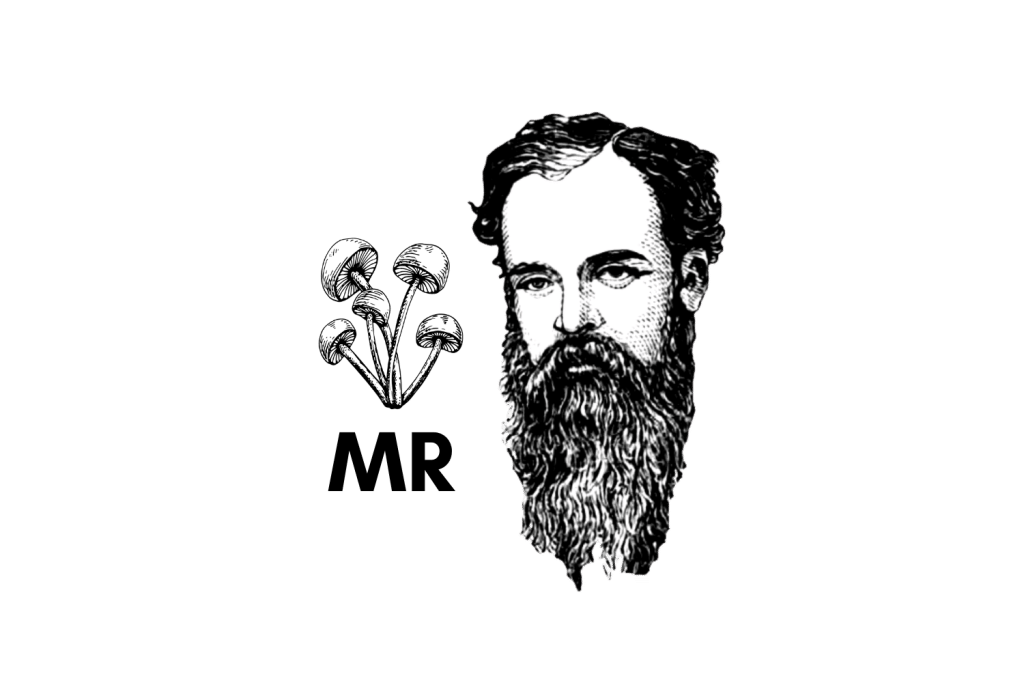
1. Matias Romero (MR)
The Matias Romero strain was initially collected in the Mexican village of Matias Romero — hence the name. It has similar characteristics to the Mazatapec strain, but it’s not as easy to cultivate.
The Matias Romero strain has watery stems and caps that shrink substantially after drying. It can cope with higher humidity levels than other strains of Psilocybe cubensis, but if the ambient air inside the fruiting chamber is left to go dry, it’s prone to aborts.
This strain is not recommended for the beginner cultivator. It can be susceptible to mold growth if it doesn’t have the right conditions, and the cultivator must be vigilant with temperature and humidity levels. For the more experienced cultivator, this is an interesting and photogenic strain to grow.
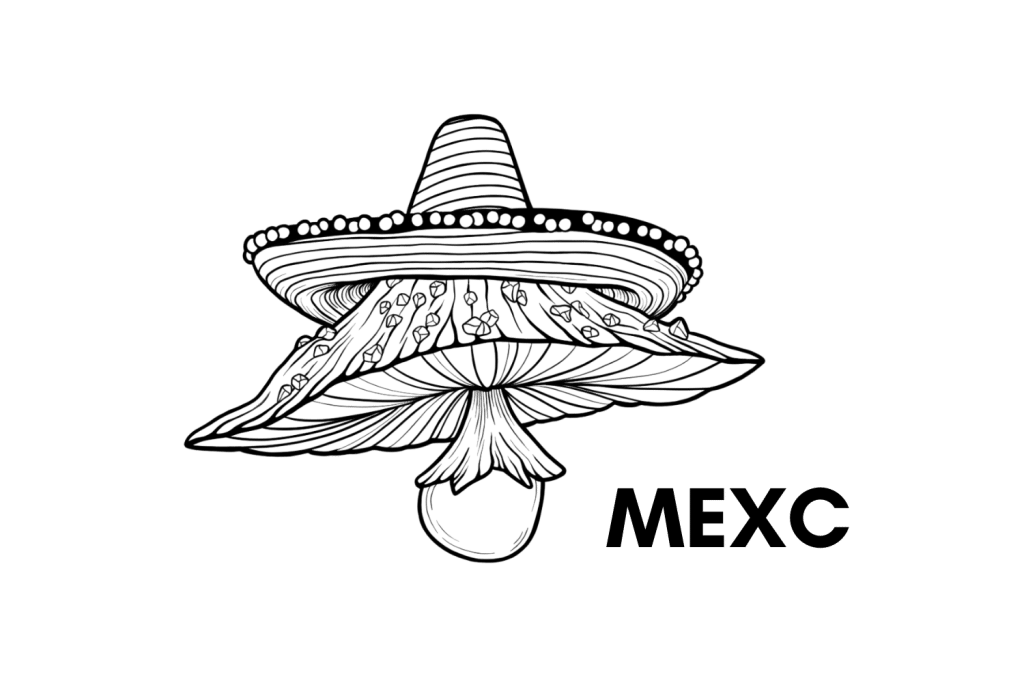
2. Mexicube (MC)
Mexicube is a pretty Mexican Psilocybe cubensis strain. The mushrooms produce caps that are yellow to golden in color with pure white stems. Uniquely, the caps of this strain have white spotted caps, similar to a toadstool. The mushrooms are small to medium in size.
Mexicube is an aggressive colonizer capable of producing several dense clusters of mushrooms over multiple flushes. With excellent contamination resistance and an ability to thrive in an unoptimized environment, Mexicube makes a good beginner strain that’s easily cultivated.
This is a good option for people looking to produce a large yield of shrooms over several flushes.
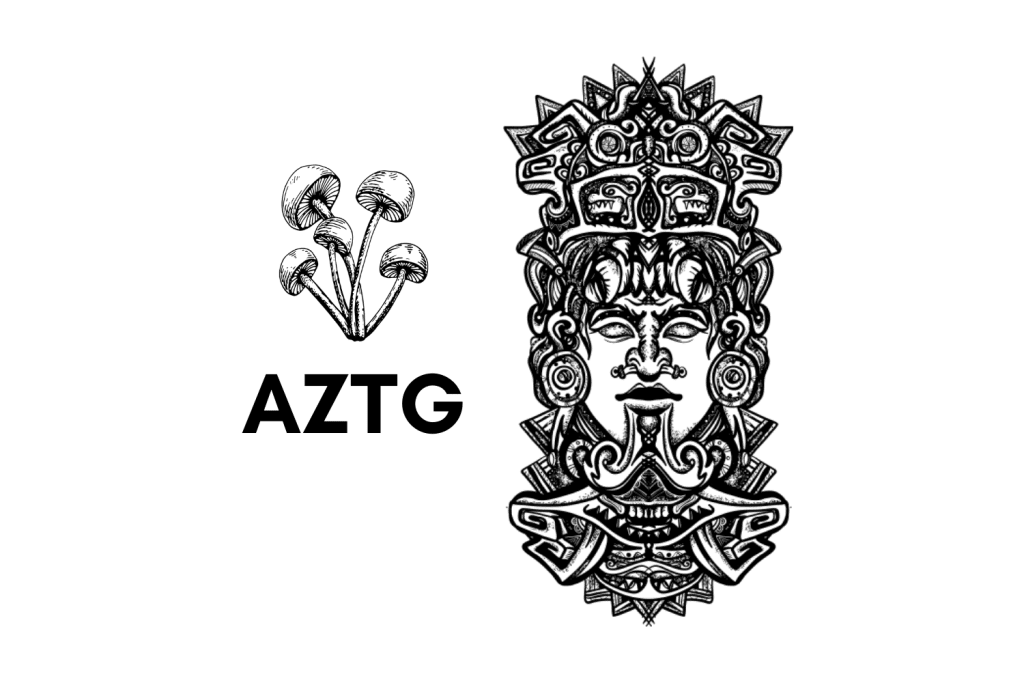
3. Aztec God (AZTG)
Aztec God was originally discovered growing in Central America. It gets its name from the Aztec Tribes that supposedly used these mushrooms hundreds of years ago. This genuinely ancient strain may have been used in sacrifice, ceremony, and healing as early as the 13th century.
The mushrooms are medium-sized, have white stems, and a light brown, chestnut-colored rounded cap. They’re a little sensitive to external conditions and can be susceptible to contamination. However, you can get good yields of potent mushrooms with the right conditions.
Aztec God is considered an intermediate species that shouldn’t be approached by a cultivator with little experience or someone who needs consistent yields. However, this is an excellent option if you’re looking for an ancient sacred strain with a lot of history.
Other Popular Magic Mushroom Strains
Mazapec has been around in the western world for decades. This strain is a popular choice among many cultivators in the magic mushroom community.
If you’re interested in other popular strains that have been on the market for a while, check these out:
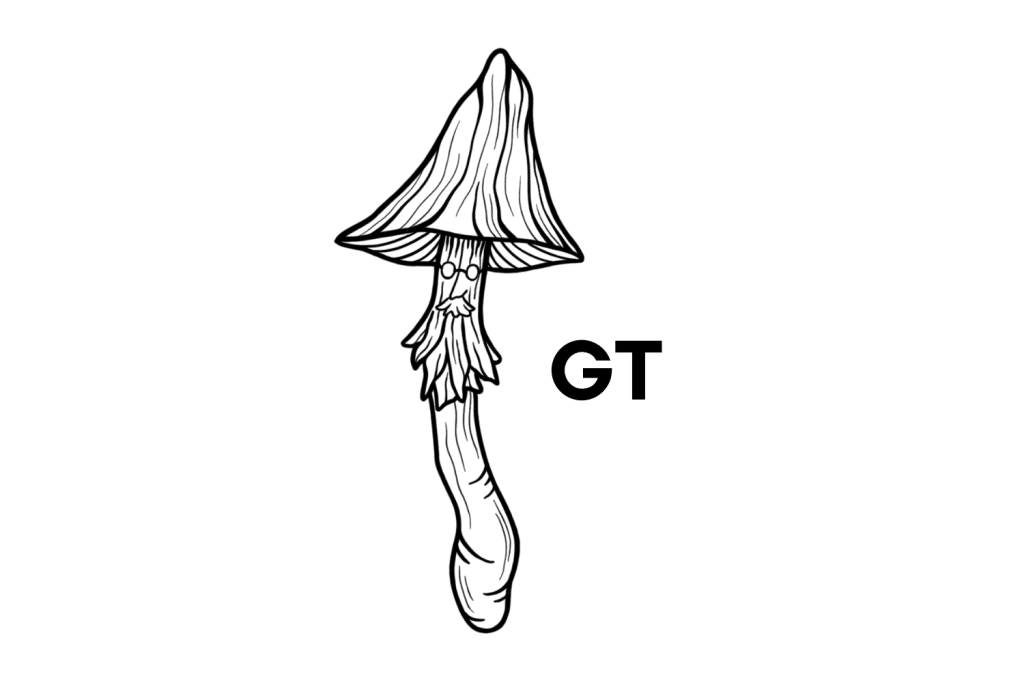
1. Golden Teacher (GT)
Golden Teacher is one of the most common and popular strains to consume and grow. It’s been around for decades and is often the go-to strain for beginner cultivators looking to enter the world of magic mushroom cultivation. It’s contamination resistant and will grow in unoptimized conditions on almost any type of substrate.
The origins of this strain have been lost with time. However, the first sample is believed to have been discovered somewhere in the Gulf region of the United States. Golden Teacher has been circulating the spore market since the early 1980s.
Overall, GT is a well-rounded strain. The mushrooms are average-looking, and the potency isn’t much to phone home about. However, it’s probably one of the most straightforward strains of Psilocybe cubensis for beginners to grow.
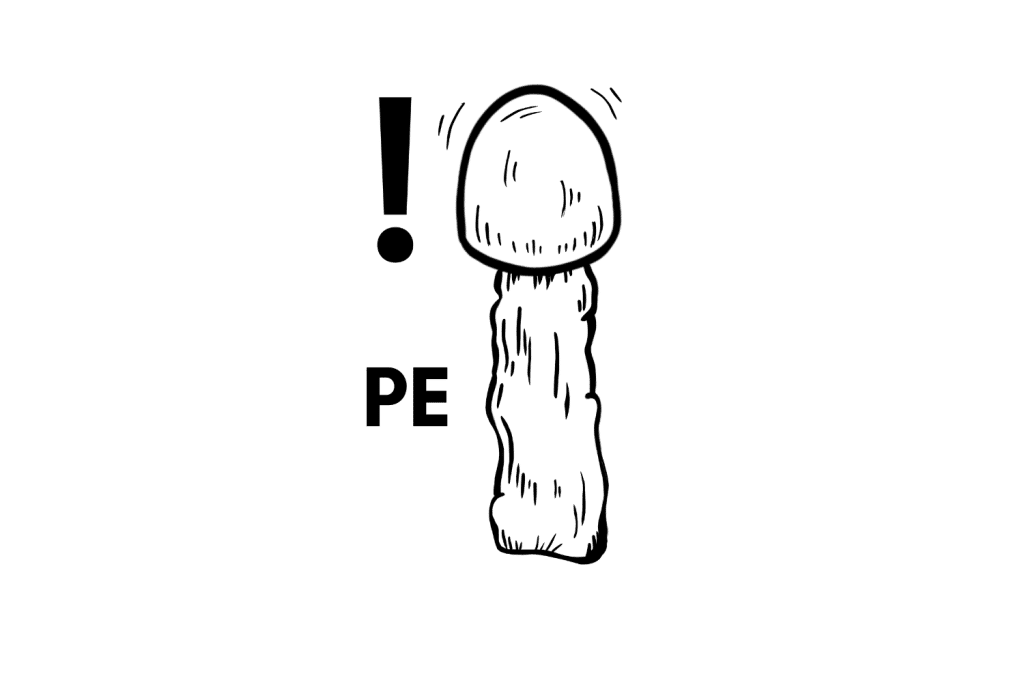
2. Penis Envy (PE)
Penis Envy is just as famous, if not more so, as the Golden Teacher strain. These phallic-shaped shrooms are some of the most potent out there. This strain is also surprisingly easy to grow, with outstanding resistance to contamination and the ability to thrive in unoptimized conditions.
Although beginner cultivators can definitely grow this strain, it’s not recommended for first-time trippers. These mushrooms are incredibly potent and induce intense psychedelic effects with as little as one gram of dried shrooms.
It’s believed the original Penis Envy sample was discovered by Dennis and Terrance McKenna during their trip through the Amazon. However, the original sample is likely far different from what we know today. The modern Penis Envy strain is the result of genetic manipulation.

3. Koh Samui (KS)
The Koh Samui strain is a Thai strain named after the island it was discovered on — Koh Samui. The famous mycologist “Mushroom” John Allen found this strain while traveling in Southeast Asia in search of psychedelic fungi in the 1990s.
The Koh Samui strain is famous for the “fatasses” it produces. The mushrooms are short and extremely fat with average potency.
Like most Southeast Asian strains, the Koh Samui strain is incredibly resistant to temperature and contamination. It’s the perfect choice for beginner growers because it can be cultivated with little knowledge, experience, or equipment.
Strains vs. Species: What’s the Difference?
If you’ve read through some of our articles, you may have heard us mention species and strains. If you’re unaware of taxonomy, these terms may be a little confusing. Luckily, these two categorical terms are easily described.
The world is made up of six kingdoms — the animal, plant, and fungi make up half of these. These kingdoms are then separated by family groups, and to divide these groups further, we have species.
A species is a biological family of organisms with the same basic genetic makeup. A strain, on the other hand, is a genetic variant within a species. Two strains of the same species can look vastly different from one another but belong to the same species because the basis of their genetic building blocks is the same.
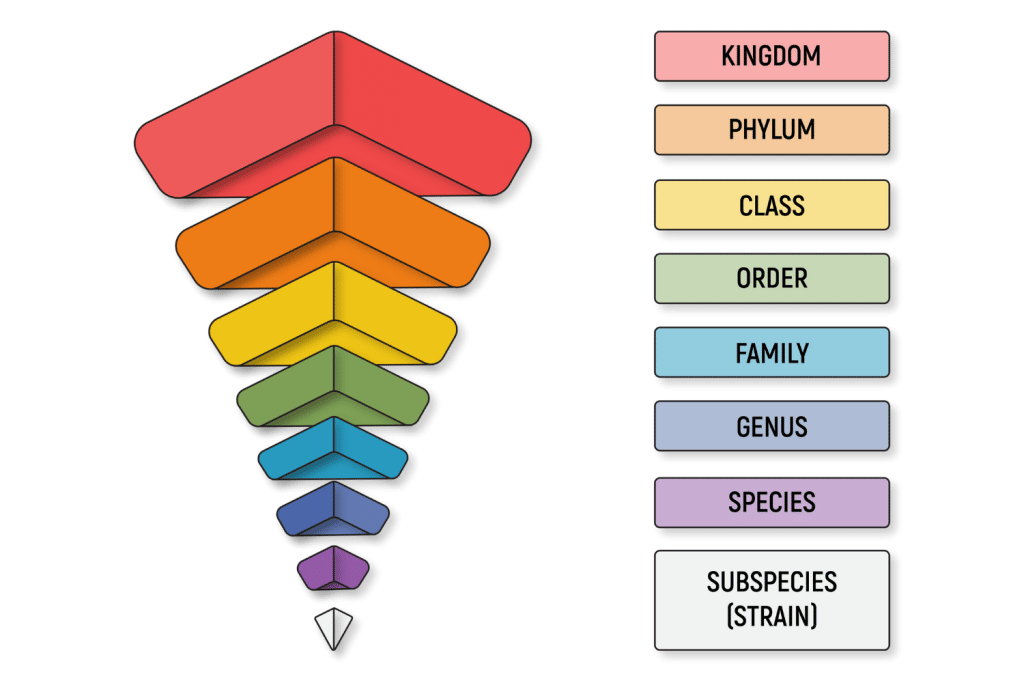
This may sound confusing, so to simplify, let’s use magic mushrooms as an example.
The fungi kingdom has hundreds of different genera (family groups). One of the genera is Psilocybe. Within the Psilocybe genus exist several other species, such as Psilocybe semilanceata, Psilocybe azurescens, Psilocybe mexicana, and Psilocybe cubensis.
If we look at one of these Psilocybe species, we can see it has many different-looking mushrooms (strains). Just look at the Psilocybe cubensis species and how it contains hundreds of strains with unique qualities.
Some strains of P. cubensis, such as Penis Envy, are renowned for their potency; others, like Golden Teacher, are renowned for their resilient nature; and some, such as Amazon, are famous for their large fruiting bodies. Although these strains look vastly different, they belong to the same species and can successfully breed to create fertile offspring.

